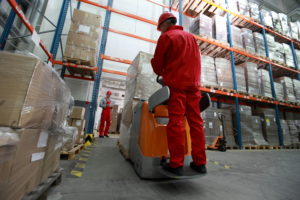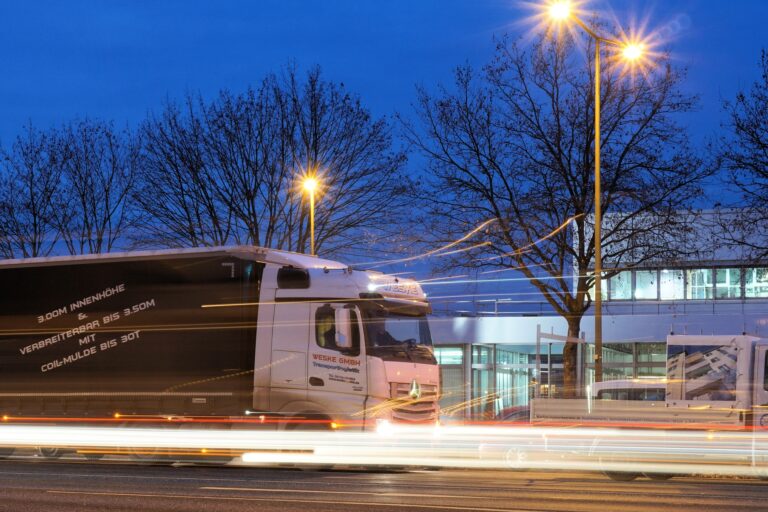As Schneider Electric’s Olivier Redon revealed at the Kinaxis Big Ideas In Supply Chain event, prioritising end-to-end orchestration of systems in the supply chain is an absolute must for companies today
Spearheading the digital transformation on energy management and automation, Schneider Electric is a behemoth of a company. It turned over €25 billion in 2020 and is growing. Around 5% of that
is ploughed back into R&D, hence more innovation, products, more customers, and more need for a collaborative, fully connected digital supply chain.
You need that when you have 130,000 people in 100 countries servings its customers’ needs. Schneider also has 80,000 people alone working in its supply chain. In terms of actual products, it boasts 150,000 order lines a day and a catalogue with close to 300,000 references – anything from a small push-button to a made-to-order medium-voltage switch gear as large as a room. These are distributed from 91 DCs globally, supplied by 183 factories. It has 14,000 suppliers, from which €7 billion of products are purchased.
Action plan
“All of this needs to be orchestrated – hence you need a plan to orchestrate it,” insists Olivier Redon, Vice President, Global Sales, Inventory and Operation Planning. “We have been building our partnership with Kinaxis for the past nine years and today we are using Kinaxis RapidResponse.”
We need to have a world-class supply chain, not just for us but for our customers. Everything begins with the customer, so we need a personalised supply chain. We need to understand their buying behaviour and adjust the way we deliver to them
During this time, Schneider Electric has reduced operating costs, inventory and risk while improving the customer experience. “We need to have a world-class supply chain, not just for us but for our customers. Everything begins with the customer, so we need a personalised supply chain. We need to understand their buying behaviour and adjust the way we deliver to them.”
Of course, Covid-19 has presented numerous challenges for supply chain managers and has aptly demonstrated that you can no longer look back for clues for strategies going forward – the rulebooks have simply been ripped up. “What you need to do is anticipate while looking forward,” feels Redon. Companies need to position themselves whereby supply chain decisions are dictated by real-time data analytics and scenario planning, and buyers and suppliers have a view of what is achievable ‘now’.

Schneider Electric’s 2021-2023 supply chain transformation strategy is known as STRIVE. In STRIVE, Schneider has six strategic objectives that form a roadmap for continuous supply chain improvement within the company, the first of which is critical. “We want to be more sustainable – net zero, circular economy,” Redon says.
“We want to move from tailored to trusted – the key word is ‘personalised’, delivering to customers based on their buying behaviour,” the expert adds.
“We want to be more resilient. And for that we need a configurable supply chain, meaning you can adjust to events in order to keep delivering.
“And we want to move from connected to intelligent – and this is where autonomous planning comes into the equation. We have a lot of data. We are connected, but it’s time to use that for insight, for demand sensing to have that end-to-end orchestration.
“We also have velocity and efficiency. We need to be agile, leveraging from our regional setups where we are closest to the customer to react fast. We need to keep developing critical partnerships with our customers to drive high performance.”
In the face of the huge disruption over the past 18 months, corporate supply chains have never been more relevant so doing nothing to improve planning has become the biggest risk. Leaders at firms such as Schneider have recognised the need for a transformational shift to agility and resiliency based on concurrent planning, which only Kinaxis can provide.
We also have velocity and efficiency. We need to be agile, leveraging from our regional setups where we are closest to the customer to react fast. We need to keep developing critical partnerships with our customers to drive high performance
Autonomous planning
Kinaxis RapidResponse helps when it comes to autonomous planning, which contains four pillars, reveals Redon. “We want to be fast and connected, we need to be powered by analytics, focusing on scenario, and totally embedded into and within a business.”
Being connected is important not only within Schneider, but up and down its supply chain. “And that includes the distribution of electronics, plastics, metal and so on – the raw materials. Thanks to the acceleration we have made, 90% of our electronics spend is connected in Kinaxis up to a tertiary supplier level. That means today our manufacturing plants are placing selling forecasts to PCBA manufacturers, and they are placing orders on forecast to electronics distribution which are placing PON forecasts to our component manufacturer. So we have a fully consolidated, long-term view. And we know we can commit to the demand. And based on the allocation, the quantities we have, we can see the full end-to-end impact when reviewing the business.”

Connecting customers is also vital and the company is using ‘channel visibility’ and co-planning as part of this awareness to create a collaborative supply chain.
“If we have full visibility on the distributors’ stock at reference level, we can integrate this insight into all development planning and consider the full demand chain. At a more advanced level, you can even tell the distributors that we can manage your inventory – we deploy vendor-managed inventory in the USA and we are running their inventory with full transparency and trust.”
The second pillar involves using the power of analytics and Redon explains that at Schneider over the past 18 months, more than 280 supply chain projects have been developed, supported by fast technologies and the availability of data, both on the demand and the supply side.

The third pillar, a focus on scenario and event management, is more what he describes as ‘change management’. As Schneider’s planners were organised by location, they were focusing on forecast creation propagation – in other words, the forecast was in the system, it’s automatic. “You can free up a lot of energy for your planners so they can reinvest that time on scenario planning.”
He also goes on to suggest automatic scenario planning is preferred to manual – for it to run autonomously with network planners based on a set of business rules. And that’s where the final pillar comes in. “We want to be hardwired into a business and here we have made some breakthroughs in the past 18 months, with a clear simplification in terms of sales, inventory and operations planning (SIOP). We were running more than 100 SIOPs, focusing on forecast creation and validation of the plan. So, we were discussing things like time and forecast accuracy in terms of inventory. And we were losing business because that’s a supply chain-driven discussion.”
Critical changes thanks to the scenario brought about revenue impact, a scenario focusing on profitable growth, and to achieve this Schneider created around 20 SIOPs at a group level.
One crucial final step is to have a single source of data because, if not, you could end up spending time in meetings debating the source of the data. “So, here we are fully leveraging from the plan, from LiveLens visualisation, and what we want to do is to fully digitise our SIOP playbook.”
Digitisation is a necessity across every aspect of the chain while automation can support event response and day-to-day operational management, predicting and mitigating risks to customer demand and shaping scenarios to deliver optimal efficiency and agility. The good news is the technology to build a resilient, agile, and collaborative supply chain already exists in Kinaxis RapidResponse.
Schneider Electric will continue to achieve the agility that only true concurrent planning can provide to drive end-to-end supply chain visibility and better plan and execute approaches for ever-changing market volatility and constraints. The result is a perfectly orchestrated supply chain able to react and provide value to the company’s clients around the world
To find out more about Kinaxis supply chain planning software, please email media@kinaxis.com or or log on to the website at www.kinaxis.com/en







